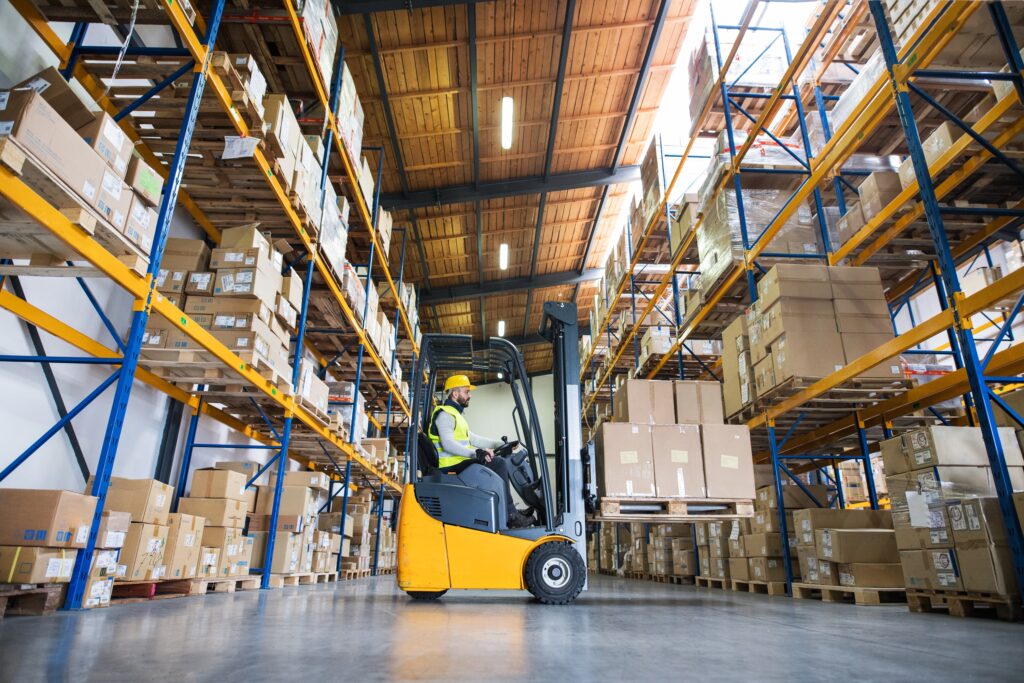Technical Talks is our series of risk management articles, produced by our in-house team of portfolio underwriting, risk managers and surveyors, offering support and guidance for you and your clients in relation to everyday business solutions.
Forklifts are extremely useful but dangerous when not used properly. Each year in the UK, forklifts are involved in:
- 1,300 serious injuries (25% of all transport injuries).1
- 5 workers hospitalized per day.2
- 1 in 5 workplace fatalities.3
Transportation and storage is an especially high-risk sector, accounting for 1 in 10 workplace fatalities. Workers in this industry are three times more likely to be killed than in other sectors.3

Key Accident Causes
- Operator error and lack of training.
- Unrealistic work targets causing rushing.
- Poor communication of safety policies.
- Unsuitable premises and tight spaces.
- Vehicle tipping over.
Over half of those injured are pedestrians (both co-workers and site visitors) or operators who have stepped out of the vehicle.
Critical Control Measures
- Operator Training
- All operators must be properly trained and certified.
- Provide frequent refreshers and monitor performance.
- Train on workplace-specific hazards.
- Daily Inspections
Check each shift:- Horn, brakes and steering.
- Leaks, tyre pressure.
- Seatbelts and safety features.
- Risk Assessments
- Follow the PAS 13 Code of Practice.
- Ensure safe traffic routes separating forklifts and pedestrians.
- Provide adequate lighting and ventilation.
- Physical Barriers
- Install certified safety barriers in high-risk areas.
- Protect pedestrians at crossings, walkways and work areas.
Operator Responsibilities
- Always follow your training and workplace safety rules.
- Never carry passengers or lift people on the forks.
- Don’t operate if fatigued or under the influence.
- Wear seatbelts and PPE.
- Face the vehicle and use steps/handholds when entering/exiting.
- Never stand on or near controls to reach the load.
- Assess each load and use the right attachment.
- Travel with the load low, watch for tight turns.
- Keep clear of edges, ramps, and soft ground.
Conclusion
Forklift accidents have serious consequences, but most are avoidable with proper precautions. Your safety and that of your co-workers depends on everyone doing their part. If you see unsafe practices, report it. Together we can keep our workplace accident-free.
Additional Resources
For more guidance on forklift truck safety, read: How do I manage the health and safety activity around my forklift truck operations?
- Key recommendations include:
Conducting a forklift-specific risk assessment. - Implementing a traffic management plan.
- Ensuring proper maintenance and pre-use checks.
- Providing high-visibility clothing.
- Thoroughly investigating all incidents and near misses.
References
1 Health and Safety Executive (HSE). “A-SAFE Forklift Accident Statistics.” https://www.asafe.com/thehiddencost/news/forklift-accident-statistics/
2 UK Forklift Training. “Forklift Accidents.” https://www.ukforklifttrucktraining.co.uk/forklift-accidents/forklift-accidents
3 A-SAFE. “Forklift Accident Statistics.” https://www.asafe.com/thehiddencost/news/forklift-accident-statistics/
For more information, please contact your local branch.
Note: Information detailed in Technical Talks has not been verified for accuracy by a third party. None of the information should be taken as legal or professional advice.